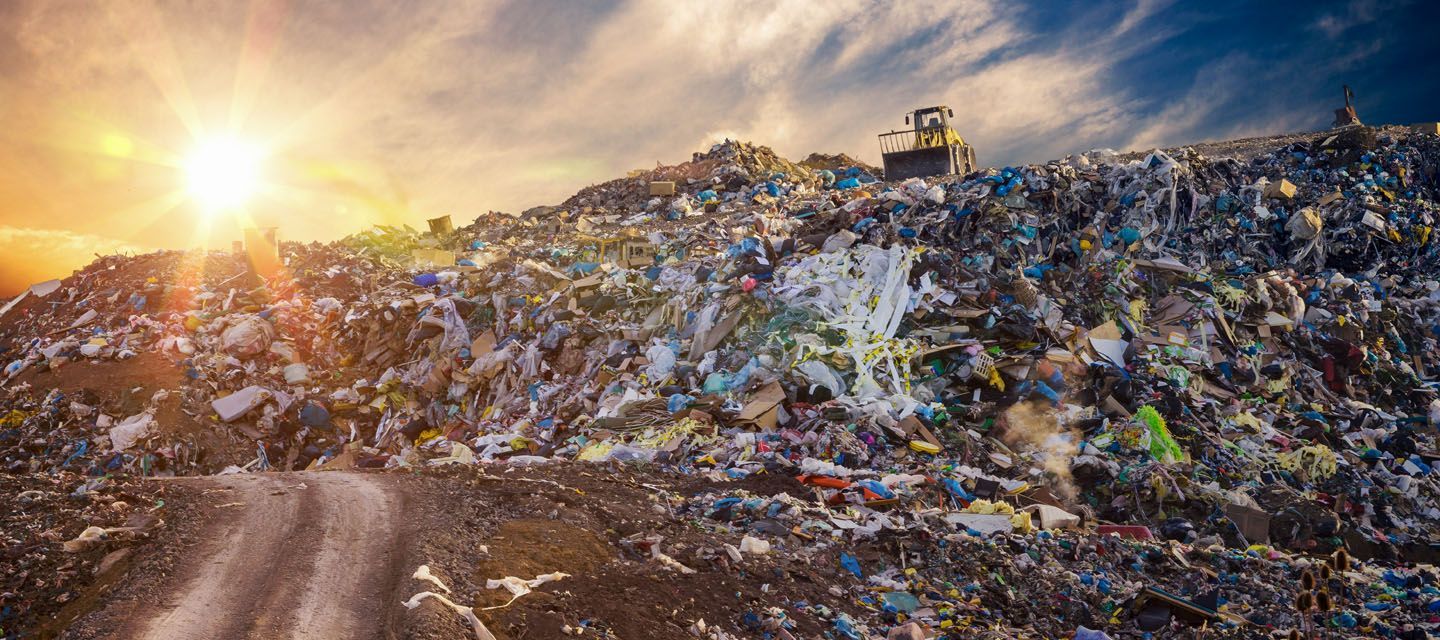The Impact of the RAAC Crisis on Asbestos Threat Levels in the UK
What does the future of asbestos management look like following the RAAC crisis in schools?

Introduction to the RAAC Crisis
The Reinforced Autoclaved Aerated Concrete (RAAC) crisis is a significant and pressing issue in the United Kingdom's construction and health sectors. The latest crisis in schools has brought the spotlight onto a once commonly used building material - asbestos. As a professional in the industry, I am writing this article to address the pressing issue of the RAAC crisis, its relation to asbestos, and the subsequent threat to public health.
The RAAC crisis is nothing new, it has been a pressing issue for the construction industry in the UK for several decades. The crisis began when it was discovered that RAAC, a material used extensively in the construction of buildings between 1950 and 1980, was prone to sudden and catastrophic failure without any visible warning signs. This discovery led to a widespread panic and a scramble to address the issue.
The crisis deepened when it was discovered that asbestos, a highly carcinogenic material, was frequently used in the composition of RAAC panels. This revelation added a new dimension to the crisis, elevating it from a construction issue to a severe public health threat.
What is RAAC and its relation to Asbestos?
RAAC is a type of concrete that was widely used in UK buildings between the 1950s and 1980s. It was popular due to its excellent thermal insulation properties and low cost. However, its structural instability and the fact that it frequently contained asbestos have led to significant complications.
Asbestos is a group of naturally occurring minerals known for their heat resistance, electrical insulation, and durability. However, when asbestos fibres are disturbed, they can be inhaled and cause severe health problems, including lung cancer, mesothelioma, and asbestosis. The use of asbestos in RAAC has therefore contributed significantly to the RAAC crisis.
Understanding Asbestos: A Silent Threat
Asbestos is often referred to as a silent killer. Its fibres are microscopic and can easily be inhaled without the individual realising. Once in the lungs, the fibres can cause irreversible damage and lead to serious health conditions.
Despite the ban on asbestos use in the UK in 1999, the legacy of its use in construction materials, including RAAC, remains a significant threat. This danger is particularly acute in the UK, where a large number of buildings constructed during the period of RAAC use are still in use today.
The Impact of the RAAC Crisis on Asbestos Threat Levels
The RAAC crisis has had a profound impact on asbestos threat levels in the UK. With the widespread use of RAAC in building construction, the potential for asbestos exposure has increased exponentially. This is because the structural instability of RAAC can lead to sudden building collapses, potentially releasing large amounts of asbestos fibres into the air.
Furthermore, the discovery of asbestos in RAAC has led to a significant increase in the number of buildings identified as containing asbestos. This has placed an enormous burden on asbestos management efforts and heightened the overall asbestos threat level.
The Role of Asbestos Management in Controlling the RAAC Crisis
Asbestos management plays a vital role in controlling the RAAC crisis. Under the Control of Asbestos Regulations 2012, those responsible for maintaining and repairing non-domestic premises have a duty to manage the asbestos in them.
Asbestos management involves identifying the presence of asbestos, assessing its condition, and managing it appropriately to prevent harm to anyone using the building. This can involve removing the asbestos, encapsulating it to prevent fibre release, or simply monitoring its condition.
How Consulo Compliance is Addressing the RAAC Crisis
As one of the companies at the forefront of addressing the asbestos and RAAC crisis, Consulo Compliance provide comprehensive asbestos management and consultancy services, helping businesses identify and manage the asbestos in their premises.
Our approach involves conducting comprehensive asbestos surveys, providing detailed reports, and recommending the best course of action for managing any identified asbestos. By doing so, they are helping to mitigate the asbestos threat posed by the RAAC crisis.
Current Asbestos Threat Levels in the UK Post-RAAC Crisis
Despite the efforts of companies like Consulo Compliance, the asbestos threat level in the UK remains high. The sheer number of buildings containing RAAC means that the potential for asbestos exposure is significant.
Furthermore, the ongoing use of buildings constructed with RAAC, combined with the structural instability of the material, means that the threat of sudden building collapse and subsequent asbestos release remains a real and present danger.
Future Projections: Asbestos Threat Levels and the RAAC Crisis
Looking to the future, it's clear that asbestos threat levels in the UK will remain high for the foreseeable future. The legacy of both asbestos and RAAC use means that a large number of buildings in the UK still contain one or both materials, and the threat of exposure will continue until these buildings are either demolished or the asbestos is safely removed.
Furthermore, the structural instability of RAAC means that the risk of sudden building collapse and subsequent asbestos release will continue to be a concern. Therefore, ongoing efforts will be required to manage this risk and protect public health.
The Future of Asbestos Management in the UK After the RAAC Crisis
As we look beyond the RAAC crisis, it's clear that asbestos management will continue to play a critical role in protecting public health. The lessons learned from the crisis will undoubtedly play a significant part in shaping the future of asbestos management in the UK, with a greater emphasis on proactive identification and management of asbestos in buildings.
Furthermore, the RAAC crisis has highlighted the need for ongoing research into safer building materials and methods of construction. This will likely lead to innovations in the construction industry and stricter regulations to prevent a similar crisis from occurring in the future.
Case study: Successful Management of Asbestos Threat During the RAAC Crisis
Despite the challenges posed by the RAAC crisis, there have been several success stories of effectively managing the asbestos threat. These case studies highlight the importance of proactive asbestos management and provide valuable lessons for the future.
One such case study involves a large office block in London. The building was constructed using RAAC and, following the discovery of asbestos, was subjected to a comprehensive asbestos management plan. The plan involved regular monitoring of the asbestos condition, encapsulation to prevent fibre release, and safe removal of the highest risk asbestos containing materials.
Future Predictions: The Continued Asbestos Threat Post RAAC Crisis
As we look to the future, it's clear that the asbestos threat in the UK will continue for some time. The legacy of RAAC use means that a significant number of buildings in the UK are at risk of partial or even complete collapse resulting in the release of asbestos fibres. Until these buildings are either demolished or the asbestos is safely removed, the threat of exposure will remain high. Therefore, ongoing efforts will be required to manage this risk and protect public health.
Practical Steps for Businesses in Response to the RAAC Crisis
Given the increased asbestos threat posed by the RAAC crisis, there are several practical steps that businesses can take. Firstly, businesses should ensure that they have a comprehensive asbestos management plan in place. This should involve regular surveys to identify the presence of asbestos, regular assessments of its condition, and appropriate management measures.
Secondly, businesses should invest in training for their staff. This should include training on the dangers of asbestos, how to identify it, and what to do if it is discovered.
Finally, businesses should engage with professional asbestos management companies, like Consulo Compliance, to ensure that they are managing the asbestos in their premises effectively and safely.
Steps for Improved Asbestos Management and Control
Looking to the future, there are several steps that can be taken to improve asbestos management and control. Firstly, there needs to be a greater emphasis on proactive identification and management of asbestos. This should involve regular surveys and assessments, as well as appropriate management measures.
Secondly, there needs to be ongoing research into safer building materials and methods of construction. This will help to prevent a similar crisis from occurring in the future.
Finally, there needs to be stricter enforcement of the Control of Asbestos Regulations 2012. This will ensure that businesses are taking the necessary steps to manage the asbestos in their premises and protect public health.
Conclusion: Lessons Learned from the RAAC Crisis and Future Directions
In conclusion, the RAAC crisis has highlighted the ongoing asbestos threat in the UK and the vital role of asbestos management in protecting public health. The crisis has taught us valuable lessons about the dangers of asbestos and the importance of proactive asbestos management.
Looking to the future, it's clear that the asbestos threat will continue for some time. However, with the appropriate measures in place, we can manage this threat and protect public health.
The RAAC crisis has been a wake-up call for the construction industry and has highlighted the need for ongoing research into safer building materials and methods of construction. By learning from the RAAC crisis, we can ensure a safer future for the UK construction industry and the public.
If you're worried about RAAC in your building and how it may impact on managing your asbestos, contact us today for a FREE consultation.









